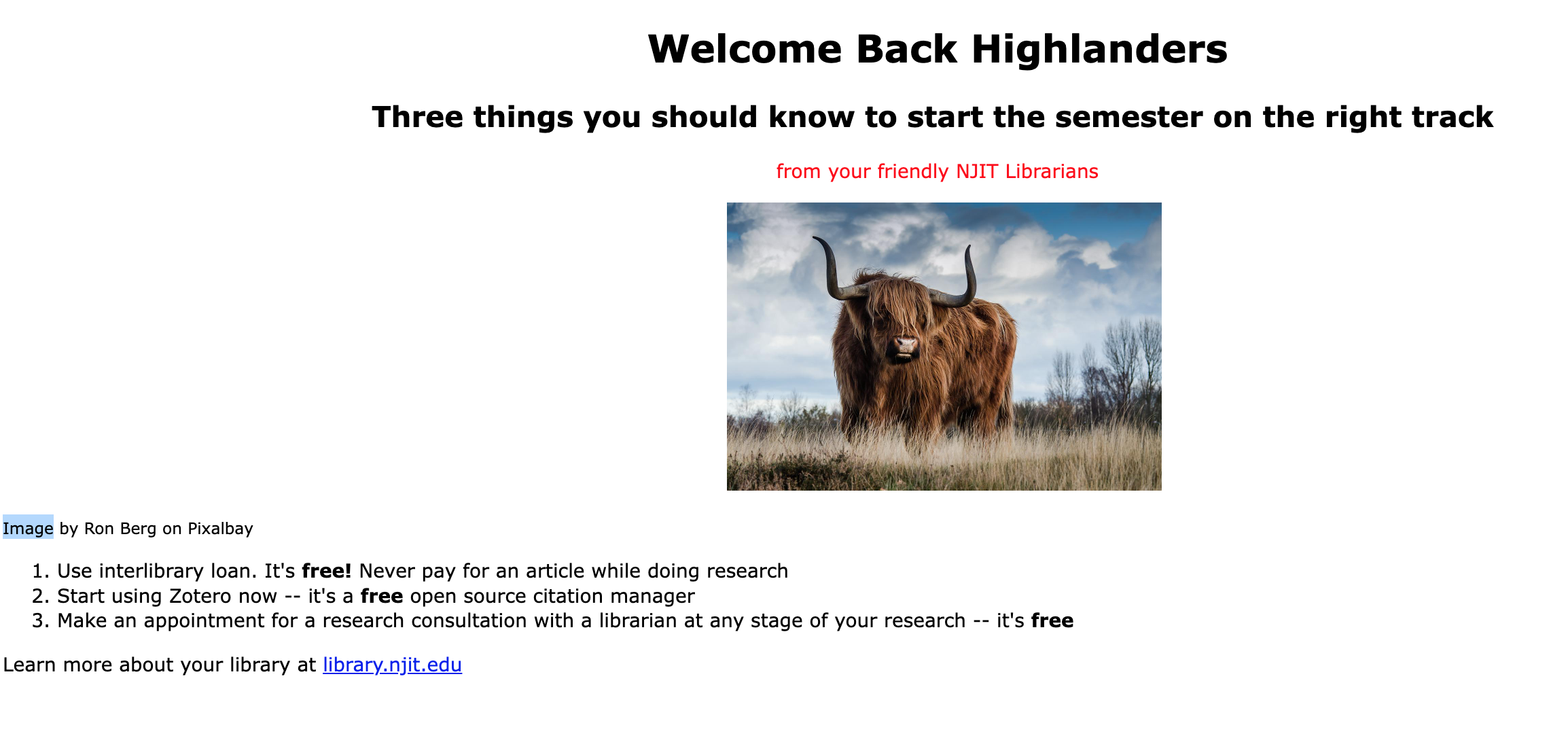I decided to dust off my HTML skills.
I’m sure you’re wondering “why?”
Because sometimes it’s good to understand how my digital content looks “under the hood.” Screen readers don’t read in a linear fashion. They don’t read content from beginning to end. When you think about it — you don’t do this when you look at a webpage. You use the navigation cues like tables of contents, lists, links, etc. to decide what’s important to read.
Screen readers use HTML “hypertext markup language” to help the user navigate by reading certain parts of the website first like the headers and links and other navigational features. HTML is also the instructions that a browser uses to display your webpage. HTML structures content — browsers and screen readers use these structures in their own ways to help the user navigate.
Take a look at what I made:
Be kind in your judgment!
As i created it, I sometimes used the WYSIWYG editor when I wasn’t familiar with an HTML tag I needed to use (such as resizing the image). As I used the WYSIWYG, I saw that it sometimes misinterpreted what I wanted to do. For instance, it added <h2> tags to stuff I didn’t want to be in the heading. This would have confused the screen reader.
I also feel happy about the HTML5 community on the web. I decided to add a caption to my image. I googled and found many forums of happy HTML5 users who had shared how to do just this with the <figcaption> tag. I also rediscovered the <small> tag.
What’s the moral of the story? Maybe you don’t need to code with HTML — but you do need to know how to edit with it.
